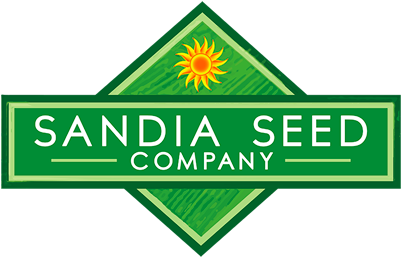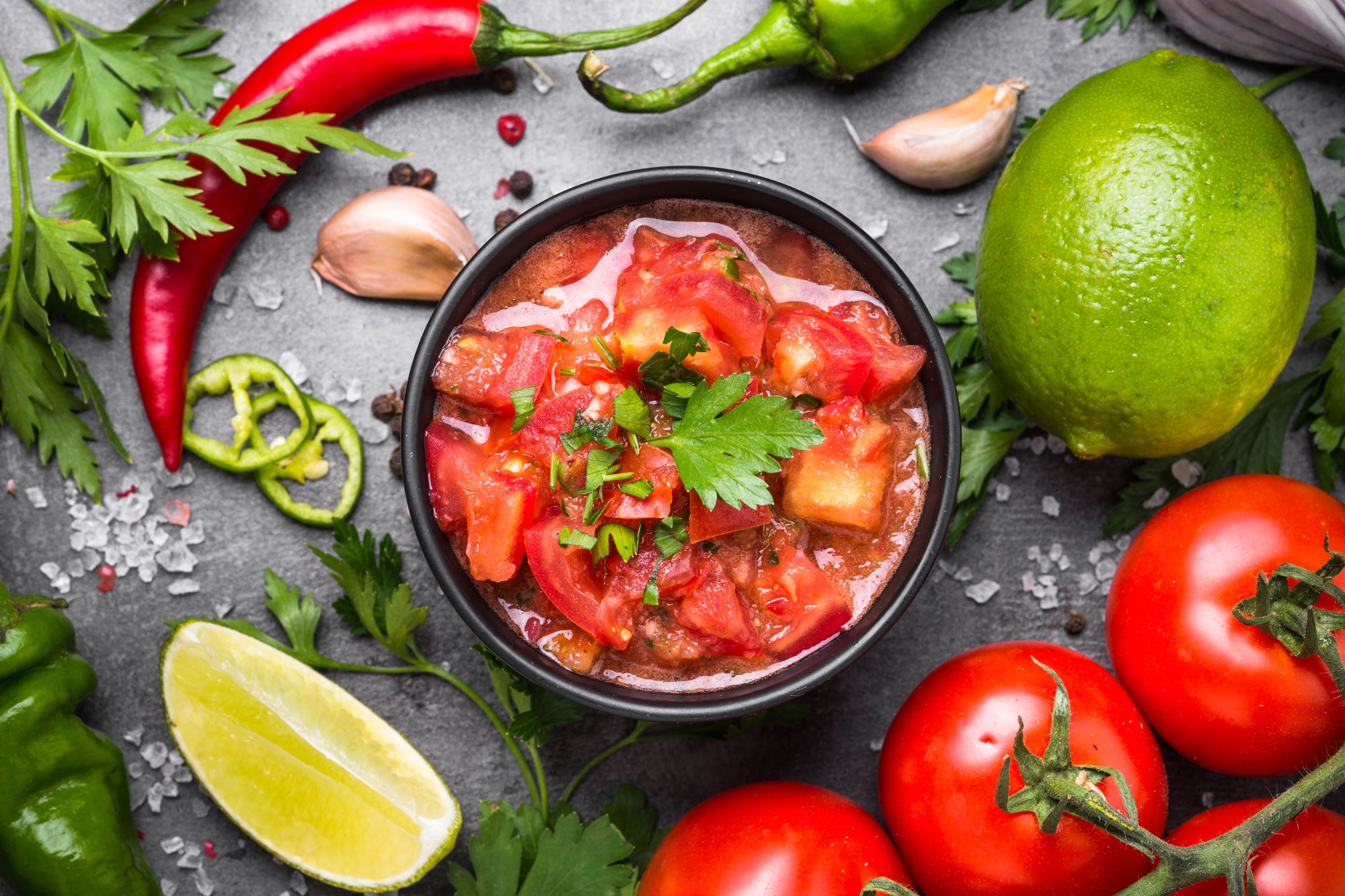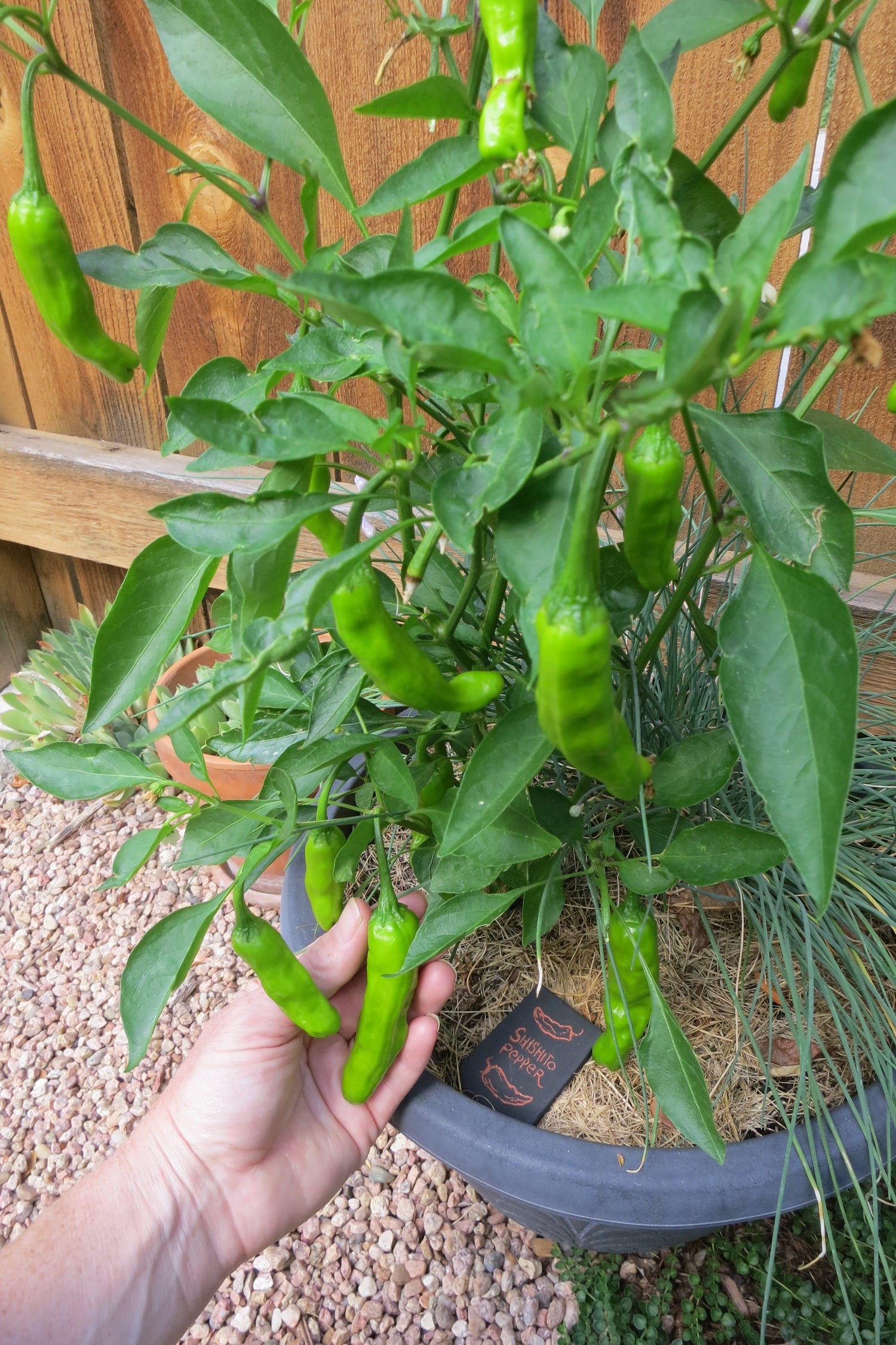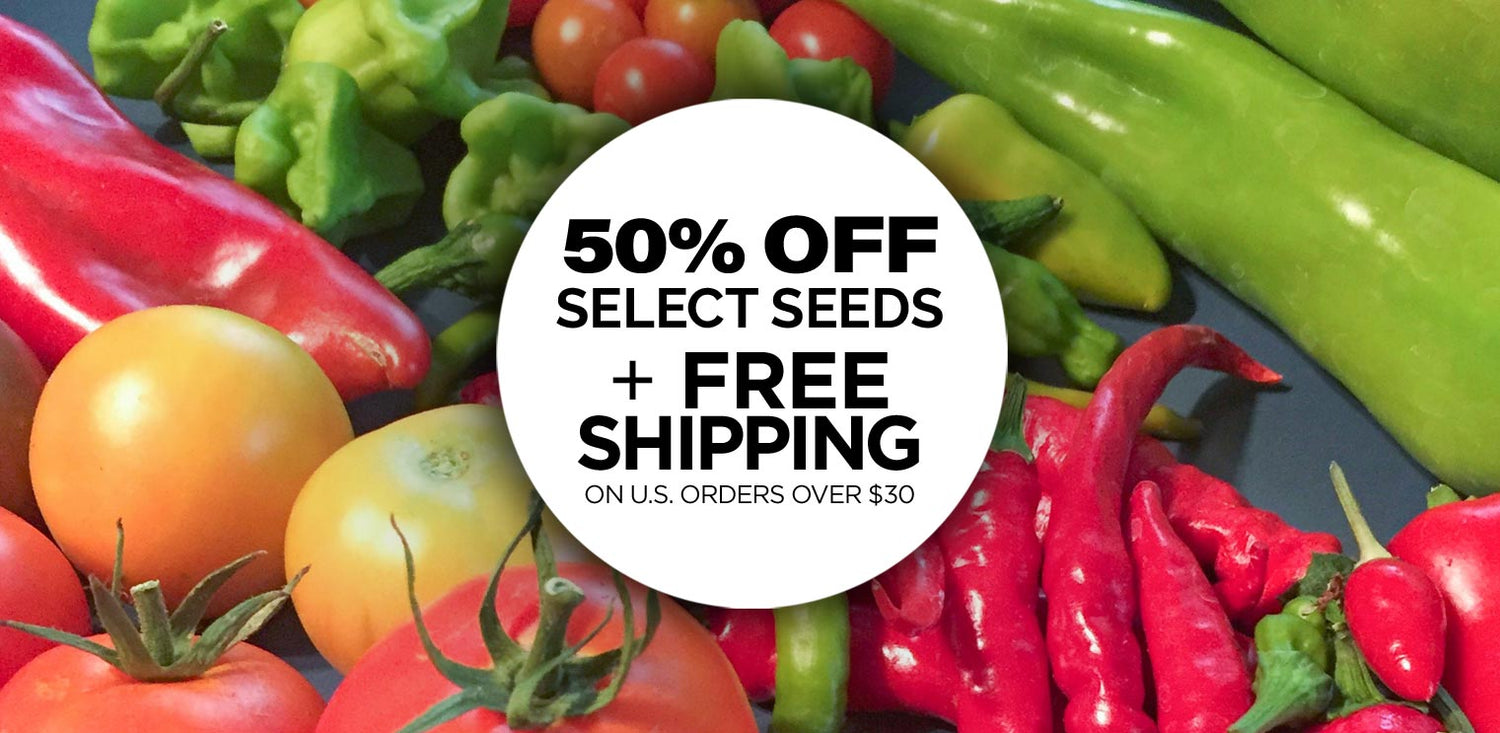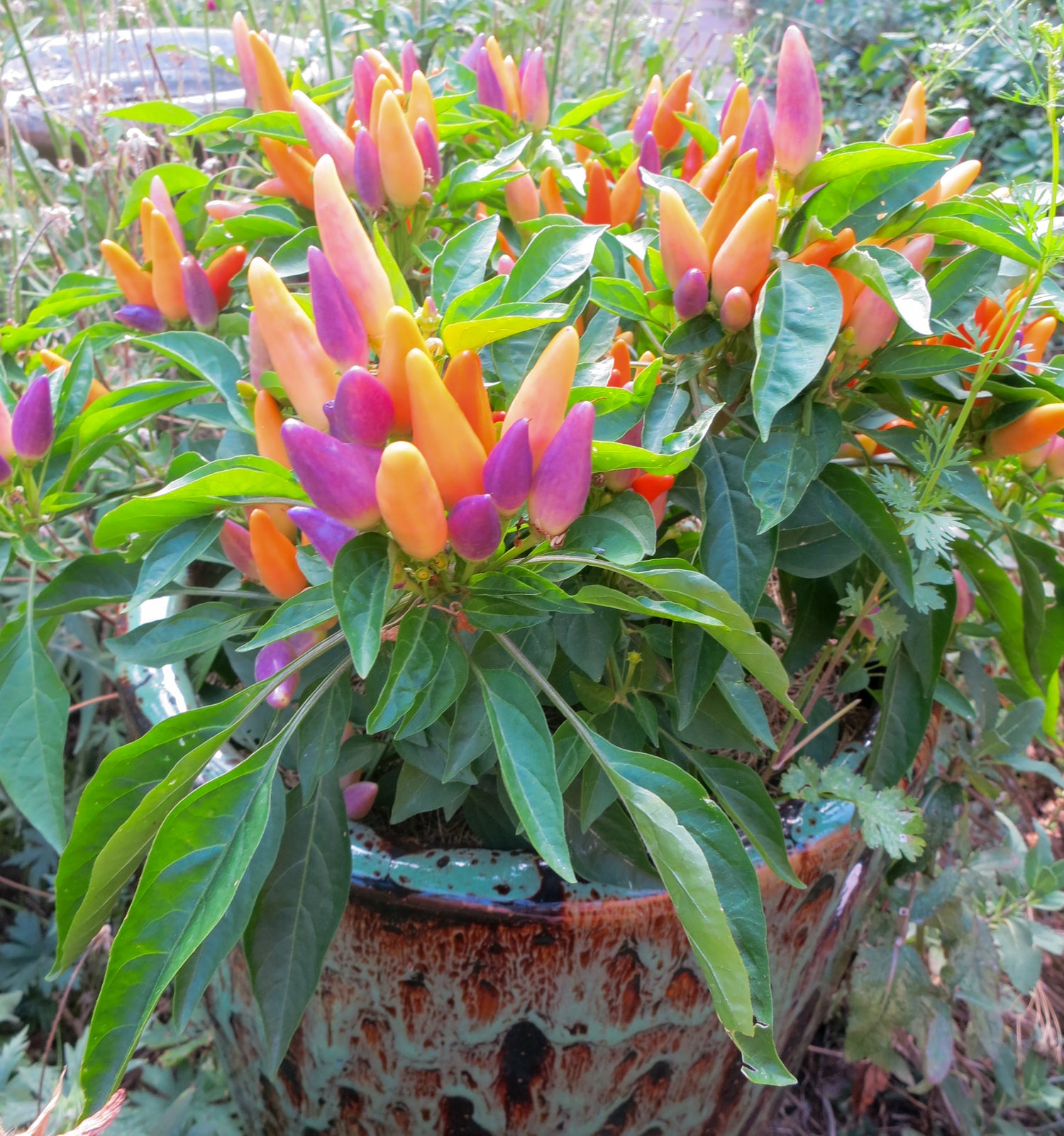So, what can you plant in January?

What to Plant in January:
January is a great time to start some vegetable or herb seeds indoors if you have the room! Growing Basil in a sunny window is practical and charming – you can snip leaves off to keep the basil plant stocky and use them to use with pastas, pizzas, salads, soups and sandwiches.
If you have grow lights you can grow plants under and you have plenty of room, some people start pepper seeds more than 8 weeks before the last frost, some start seeds as early as January or February. As the pepper plants grow, it's important to transplant them into larger, deeper containers to ensure a nice root system to transplant into the garden after all chance of frost has passed. So, if you have plenty of space, you can start peppers anytime, really! In fact, many people keep peppers growing indoors for years! Learn more about how long pepper plants live.
Peppers are slow starters, so getting them started early is good when growing in short season gardens.
Tomatoes and eggplants can also be started early, but be sure to transplant them as they grow larger, and each time you transplant the tomatoes make sure to bury their stems deeper into larger pots over time so they can develop a nice deep root system. It is ideal never to let your seedlings get root-bound, so it may be best to start these plants closer to spring if you don't have room for a bunch of large plants indoors. :)
Starting Cool Season Vegetables in January
Note: Root vegetables like radishes, beets and carrots should be direct seeded as they don't transplant well and grow quite quickly. These plants are also fairly resilient in cold spring weather, and will usually take off once the temperatures warm up.

No grow lights?
No space to start seeds in your house?

Winter Sowing in January
1. Pick a Container & Prepare it for Planting:
If it's a jug, cut it in half so that you have about 4-5" bottom to fill with soil. You can leave a "hinge" by not cutting all the way around if desired.
2. Fill with Damp Potting Soil:
It's good to mix your well-draining POTTING soil with water to get it nice and moist first (don't use topsoil or garden soil for these, it should be a loamy fast draining potting soil). Fill the container with about 4" of soil. Spritz with more water to make sure it's nice and damp before planting your seeds.

3. Plant your Seeds:
Plant your seeds sparingly, we tend to overseed these thinking that all the seeds won't sprout, but most usually do so you'll have a crowded situation if you just dump a hole bunch of seeds in like we did last season. ;) If you do overseed, you can gently separate seedlings in the spring when ready to transplant, so we made it work, but this year we were much more reserved in the number of seeds we planted to give each seedling some space. You can refer to the seed packet for seed spacing.
You can start cool season vegetable seeds such as lettuce, broccoli, spinach, green onion, sugar snap peas, cabbage, cilantro, oregano in January-February in your winter sowing jugs.
You can also try Pepper Seeds, Tomato Seeds and other warm season vegetable seeds using this winter sowing method, but it may be best to do so after the temperatures have warmed up about 4-8 weeks before your last expected frost, and, you may want to protect them or bring indoors if a deep freeze is expected. The cool season veggies we listed above are much more tolerant of cool temperatures than pepper seeds and seedlings, for example., which typically like 80-90˚ F temperatures to sprout and grow.
Learn more about how to germinate pepper seeds »
Water in the seeds to make sure the soil is damp but not soggy, make sure the containers are draining well.
Remove the lids on the jugs to allow for airflow, and close the jugs. Some people use duct tape to seal jugs around the cut, but we have also just tucked in the bottom with the top of the jugs, no duct tape is needed if they're snug (they're a little harder to move however, if they aren't taped shut, but we don't move them anyway). Duct taping may also help if you have high winds and the tops keep blowing open.

4. Put your jugs outside in a Sunny Location
It is important they receive sun so pay attention to long winter shadows, and put them in the sunniest place you can find. It's ok if it snows on them! Keep an eye on them and use a spray bottle to water them occasionally whenever the soil starts to get dry. Be patient, it will likely longer than expected for the seeds to sprout, they will sprout in their own time with the weather warms up enough for germination. Even if they do germinate, they won't grow fast either at first during the shortest and coldest days of winter. In more humid climates you may not need any added water, while in dry sunny winter climates can result is faster evaporation. The seeds will sprout in their own time, so be patient, it could be a month or more depending on the seeds, the weather, and when you start them. Once they sprout, keep watering them as needed, and as springtime approaches, you can open them up during the day to get breezes and get more hardened off.
After they have sprouted a few real leaves, and the weather is improving in March/April/Map, after hardening the seedlings off, you can transplant cool season veggies such as lettuce, broccoli, spinach, green onions, sugar snap peas, cabbage, cilantro, oregano. You can transplant these cool weather veggies earlier in your garden if desired as they can withstand a bit of frost. You can even cover them with a frost cloth or small garden bed hoop house when extra cold weather is expected to keep them warmer. Spinach, lettuce and green onions are especially hardy and even if frozen, they may lose a few leaves, but they usually will keep growing as the spring weather warms.
Peppers, tomatoes, pumpkins, cucumbers, eggplants, basil and other warm weather veggies however are very sensitive to frost, so if you start them using this Winter Sowing method, start them closer to spring – and make sure to keep the plants covered in their containers (with lids removed for air circulation) and don't transplant into the garden until all chance of frost has passed. Pepper seeds need a lot of warmth to sprout, so if Winter Sowing it would be best to start them in April/May is probably best in most colder climates. You can also bring your pepper jugs indoors and just put them out during the day on cold nights, or cover with a blanket.
When ready, harden off and transplant the seedlings to your garden, separating them and giving them plenty of room to grow.
Find more of our top tips for:
How to Grow Peppers »

Happy growing, and enjoy your harvests!
